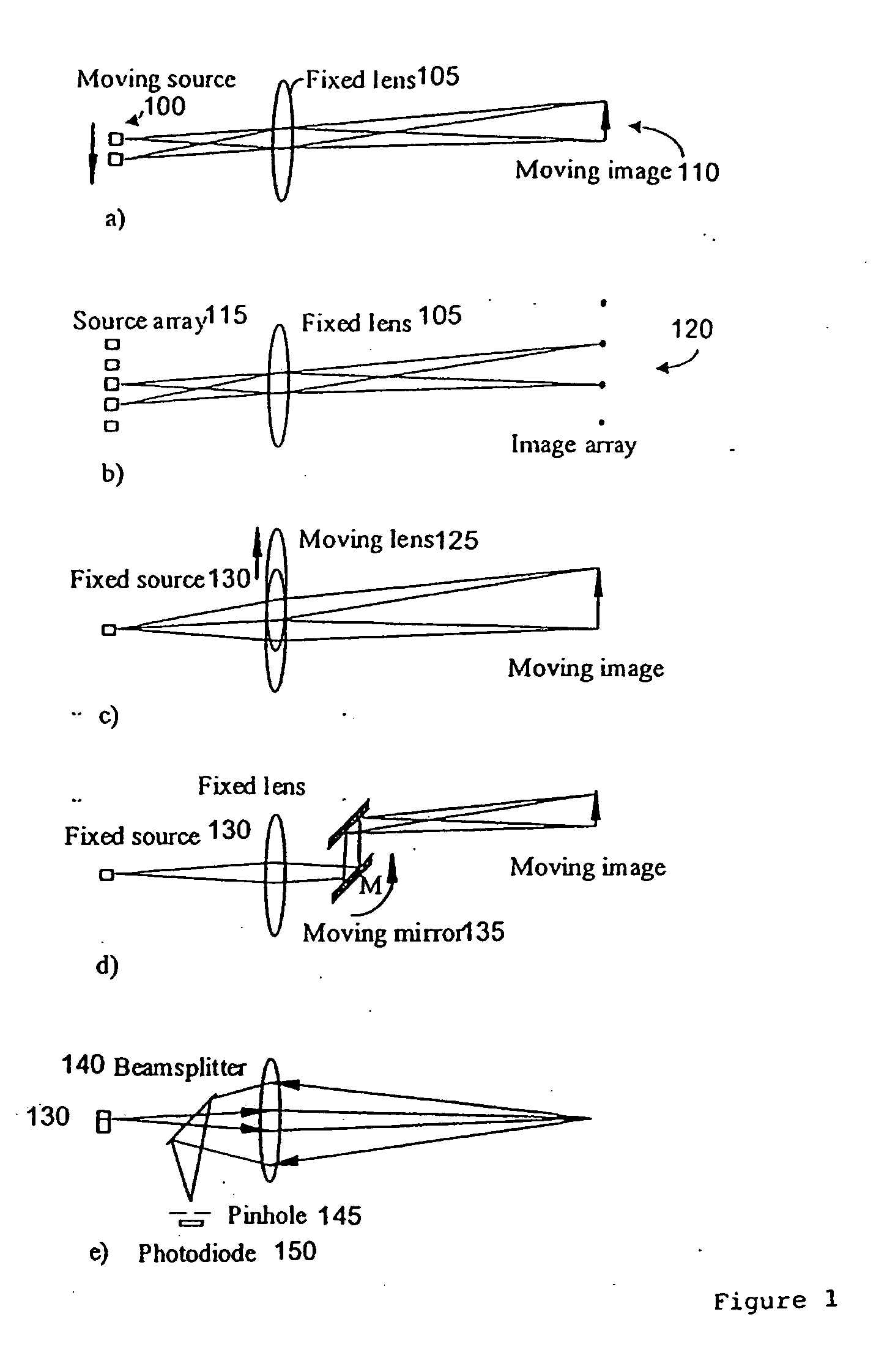Microengineered optical scanner
a micro-engineered, optical scanner technology, applied in the direction of optics, optical light guides, electromagnetic radiation sensing, etc., can solve the problems of not being able to meet the needs of moving source systems, lack of appropriate signal detection, and inability to read true systems, so as to reduce the noise of un-wanted noise, reduce the noise, and increase the range of operation of the device
- Summary
- Abstract
- Description
- Claims
- Application Information
AI Technical Summary
Benefits of technology
Problems solved by technology
Method used
Image
Examples
Embodiment Construction
[0090] FIGS. 1 to 5 have been described previously with reference to prior art implementations.
[0091] The present invention will now be described with reference to FIGS. 6 to 14.
[0092]FIG. 6 shows an integrated optical reader according to the present invention. The optical detection device provides an actuator (640) for effecting movement of a optical waveguide (630) and a detector (635) for detecting the light, which is predominately backscattered light. Both are integrally formed in a substrate (605). In a preferred embodiment a movement of the waveguide is provided by coupling the waveguide to a cantilever and actuating the cantilever to effect an associated movement of the waveguide. Desirably the detector is adapted to detect the cladding mode components of a waveguide. Preferably these components of the optical detection device are combined with a light source, a waveguide and motion detectors.
[0093] We now give a detailed description of the invention, considering in turn a...
PUM
 Login to View More
Login to View More Abstract
Description
Claims
Application Information
 Login to View More
Login to View More - R&D
- Intellectual Property
- Life Sciences
- Materials
- Tech Scout
- Unparalleled Data Quality
- Higher Quality Content
- 60% Fewer Hallucinations
Browse by: Latest US Patents, China's latest patents, Technical Efficacy Thesaurus, Application Domain, Technology Topic, Popular Technical Reports.
© 2025 PatSnap. All rights reserved.Legal|Privacy policy|Modern Slavery Act Transparency Statement|Sitemap|About US| Contact US: help@patsnap.com



